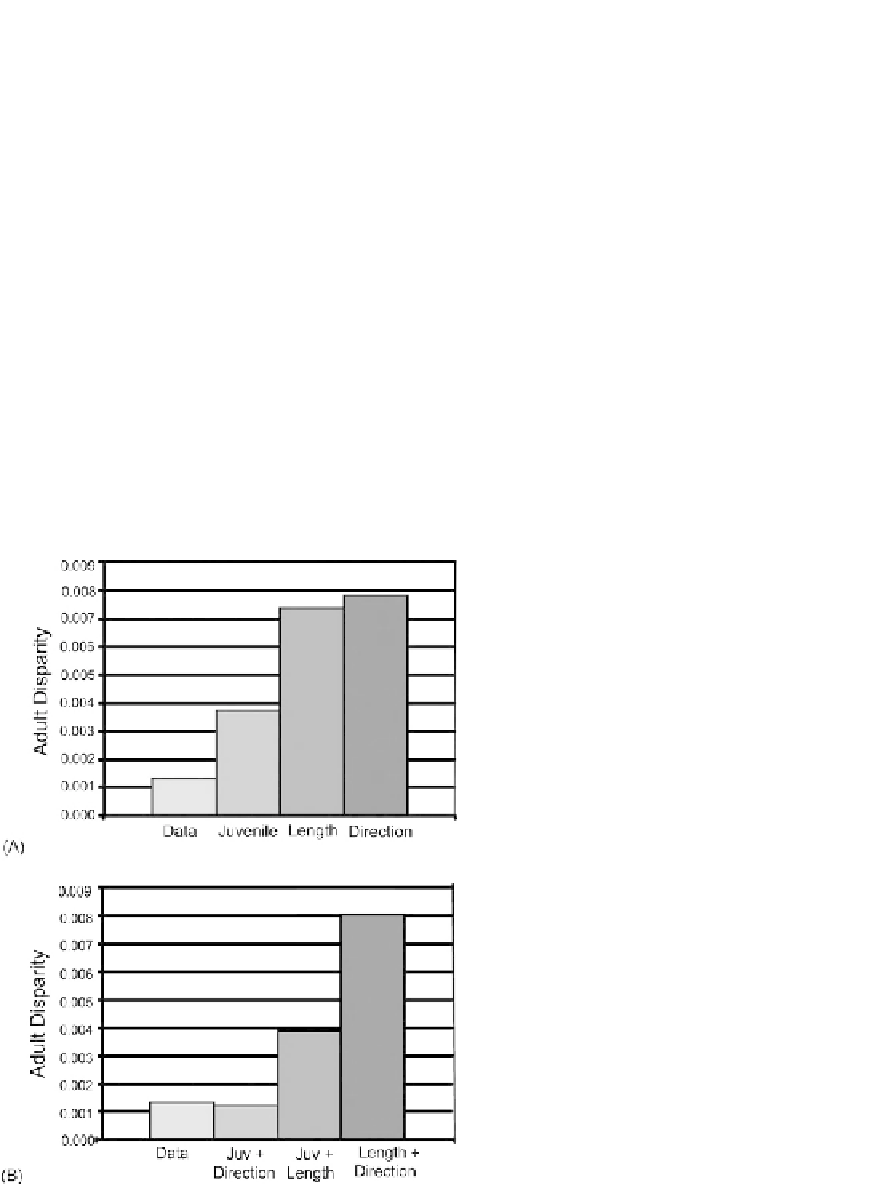Biology Reference
In-Depth Information
ontogeny contributes to disparity. What we need is a quantity similar to a partial dispar-
ity, but one that is the partial disparity for each modification rather than for each taxon.
But the partial disparities for taxa are additive
the contribution that each one makes to
the total disparity sum to the total disparity. In contrast, the contribution that each modifi-
cation of ontogeny makes to the total need not sum to the total. Two or more modifica-
tions, taken separately, can produce more disparity than the two do taken together.
To quantify the disparity due to each modification, taken individually, we can either fix
all but that one parameter of the trajectory, or we can fix only that one and allow the others
to vary. To fix a parameter, we assign the same value to both species; the one that is free to
vary has the values observed in the data. We first look at a simple case
the comparison
between S. gouldingi and S. manueli.
Figure 11.21A
shows the disparity of adults, first for the
data, then that produced by fixing all but one parameter. We can therefore compare the
disparity produced by variation in juvenile shape, length and direction to that produced
by varying only juvenile shape or length or direction. Regardless of which one varies, the
disparity of adults is far higher than seen in the data, especially if length or direction varies.
Figure 11.21B
shows the disparity of adults when two parameters vary. Again, fixing any
one parameter increases disparity over that observed in the data. The greatest increase is
found when the juvenile shape is fixed and length and direction vary.
The analysis of all nine species is more complex because we could fix the parameters for
any combination of species and fix them to any of a variety of values. In this case, we will
FIGURE 11.21
The impact of variation in onto-
genetic trajectories on the difference in shape of
adult S. gouldingi and S. manueli. (A) The disparity
observed in the data (“Data”) is compared to that
obtained by variation in only juvenile shape
(“Juvenile”) or length of the ontogenetic trajectory
(“Length”) or direction of the ontogenetic trajectory
(“Direction”); (B) the disparity observed in the data
is compared to that obtained by variation in both
juvenile shape and the direction of the trajectory
(“Juv
Direction”), juvenile shape plus the length
1
of
Length”) or length and
direction of the trajectory (“Length
the trajectory (“Juv
1
Direction”).
1


